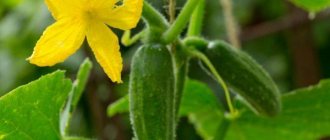Slime bow - description
Slime onions are native to Mongolia, Central Asia and Eastern Siberia. The culture differs from other types of onions both in external qualities and in cultivation, taste and even harvesting methods. So before planting this plant, you need to study its features.
Slime onion is a perennial onion-rhizome crop. It is often found in the wild, but is cultivated only by lovers of the species. The plant is cold-resistant and can withstand even harsh, frosty winters without insulation. If growth is not controlled, the bush can grow greatly.
Onion slime - description of culture
The root system is represented by a false bulb with developed roots. The ground part is a rosette formed by wide, flat leaves, rounded at the top. The leaves of the crop are green, very juicy, dense; if you break them, you can see a lot of mucus released. The height of the leaves can reach 30 cm, and the width - 2 cm. A year after planting, the plant produces an arrow up to 70 cm long with a beautiful inflorescence. This usually occurs from July to August. The buds are painted white or purple. The seeds ripen unevenly and are usually collected in 3 doses.
Interesting!
Until the moment when the flowers on the arrow bloom, the peduncle is drooping and tends to the ground. For this quality, the crop is also called drooping onion.
Reproduction
Like most representatives of the plant world, the slime onion is capable of reproduction in two ways:
- vegetative . Reproduction occurs by separating daughter shoots from the mother plant. This onion does not grow bulbs around the main one, since the type of root system allows it not to be limited to a small area. Reproduction is carried out by dividing the bush into shoots. It is better to divide bushes that are more than two years old;
- generative. Seed propagation makes it possible to obtain stable yields of those specimens that have the necessary qualities. Those onions that have strong growth, better taste and adaptability to external conditions can be grown with seeds. Slime onion seeds are ready for collection when their boxes have already begun to dry out. They are subject to ripening in conditions outside the plant.
Onion Slime is propagated by dividing the bush
It is easier and faster to propagate the plant by simply dividing the bush.
Popular varieties of slime onions
Also check out these articles
- Description and characteristics of the Kholmogory breed of geese
- How to feed garlic in spring?
- Phoenix cucumber variety
- How to grow watermelons in the Moscow region
A year after planting, the plant produces an arrow up to 70 cm long with a beautiful inflorescence
You can find different varieties of slime onions on sale. Below are some of them.
- “Dwarf” is a mid-season variety. The leaves are green with a bluish bloom, growing up to 25 cm in length. From a square plot you can harvest up to 1.5 kg of crop per year. The harvest is used primarily for salads. The variety is resistant to frost.
- “Leader” is a mid-season variety. The leaves are light green. The stem and root system are frost-resistant. Productivity – 2 kg/m². The taste is mildly pungent, the leaves contain a lot of vitamins and sugar. The aroma is more garlicky than oniony.
- “Green” is a compact variety of semi-spreading onion with a developed root system. The leaves are large, flat, dark green. The taste is juicy, delicate, with a slight garlic aroma. With proper care, about 6 kg of crop can be harvested from 1 m² of land. Valued for its unpretentiousness, pleasant taste, resistance to diseases and frost.
Interesting!
You can grow slime onions not only in open ground, greenhouses, but also in pots and boxes installed on the balcony or even in the house.
How to grow seedlings from seeds at home on a windowsill?
Onions are grown in open ground, greenhouses, greenhouses or in various containers at home.
How to prepare seeds for planting?
To get a high yield, the seeds should be properly prepared:
- Before planting, they are soaked in a pale pink solution of potassium permanganate and washed in cold water.
- After this, the seed material is dried, spread in a thin layer on paper or a napkin, and placed in a biostimulant solution.
How to sow?
Pre-prepared seeds are planted in wooden boxes or plastic containers filled with nutritious soil mixture. The culture prefers loamy, slightly acidic or neutral soil. To grow seedlings, use soil consisting of equal parts:
- garden soil;
- coarse sand;
- peat and humus.
The seeds are sown in furrows to a depth of one centimeter, sprinkled with soil on top and watered with warm water.
The containers are placed in a warm, bright room for germination.
To shorten the germination period, the boxes can be covered with plastic film or glass to create a greenhouse effect.
In this case, the boxes must be opened periodically for ventilation. The first shoots appear after 10 – 14 days.
How to care?
- Lighting. After the first shoots appear, the containers with seedlings are moved to a bright place. In case of insufficient lighting, additional illumination with fluorescent lamps is used.
- Watering. Young plants need moderate watering. Moistening is carried out as the top soil layer dries. The soil should not be allowed to dry out completely or become too waterlogged.
- Picking. If the plantings are very dense, it is necessary to remove weak shoots. Thinning is carried out in several stages. As a result, the strongest seedlings remain.
- Hardening. They begin 7–15 days before planting seedlings in a permanent place. Boxes with seedlings are taken out into the open air. gradually increasing the time spent outside.
Useful properties of onions
Slime onion variety “Dwarf”
Slime onions have a pleasant taste, garlicky aroma and are highly valued because they have various beneficial properties.
- The leaves contain vitamins B1, B2, C, PP and minerals (potassium, iron, zinc, molybdenum, magnesium) necessary to strengthen the heart and blood vessels. Recommended for people suffering from anemia.
- The mucous substance of this product has a beneficial effect on digestion, so the leaves of onion-slime are prescribed in the treatment of ulcers and gastritis.
- Carotene, phytoncides, and sugars in the composition help eliminate toxins.
- The leaves of the plant are often used to heal wounds. They not only have a disinfecting effect, but also relieve pain.
- Slime onion strengthens the immune system, contains a natural antibiotic, polysaccharides, and glucose.
- The culture has a positive effect on the condition of the hair if you make masks, lotions, and baths from it.
- Doctors note the positive effect of mucus on the female and male reproductive systems.
The beneficial properties of the slime onion do not end there. It is believed that when consumed regularly, it helps to tone the muscles and the whole body, normalizes the functioning of the thyroid gland and even rejuvenates the body.
Soil preparation and planting
Ideally for drooping onions, soil with a neutral-waterproof suspension is suitable. Acidic soil is not suitable for the plant, as this can change the taste of the onion and give it a bitter taste.
In order to reduce the acidity of the soil, you need to add dolomite flour or chalk . Humus or compost is added before creating the bed, at the rate of 6 kilograms per square meter.
The plant is easy to care for and grows well anywhere, but in open sunny places it will grow better and produce juicy and tender greens. To obtain a rich harvest, the bush must be replanted to a new place every 5 years.
Beds where legumes used to grow are best suited, as they have the property of enriching the soil with nitrogen and making it looser and more porous.
Slime onions should not be overfilled and care must be taken to ensure that rainwater does not stagnate in the holes. If there is too much water, the bulbs will begin to rot. There are several rules for getting a good harvest and for the plant to be strong and healthy:
- In the first year of growth, the leaves should not be trimmed. This will help the bulb gain strength and get stronger for next year.
- In the second year, we cut off the minimum number of leaves.
- In the third year of growth, all feathers are cut off. Over these years, the bulb will accumulate nutrients in order to be used for the formation of green mass.
- Drooping onions should not be planted close to other bulbous plants. This is due to unwanted pollination and imparting a bitter taste to the crop, and the plant will lose its garlicky onion smell.
- In an adult bush, constant pruning of the arrows is necessary.
Harm of onion slime
We recommend reading our other articles
- Sterilizing jars in the oven
- How to plant raspberries in the fall
- How to plant dill seeds
- The best varieties of strawberries with descriptions and photos
Slime onion variety “Leader”
Since the slime onion has a rich composition, it is often used to improve the health of the body. But it can also cause harm in certain cases.
- If you have gout, this plant can be harmful.
- During pregnancy and lactation, eating onion is not recommended; it can be dangerous for the baby.
- During the progression of diseases of the digestive system, the product is contraindicated. But in the remission stage it can be eaten, but only after heat treatment.
- If you have an individual intolerance, you should not eat this onion even in small quantities.
Contraindications and possible harm
Slime onion can be included in the diet of almost all people. The list of contraindications for use includes exacerbations of the following diseases:
- ulcerative lesions of the gastrointestinal tract;
- disorders of the urinary system.
Some people experience heartburn when eating mucus. There is a possibility of developing allergic reactions. When used externally, some may experience irritation on the skin and begin to peel.
Attention! Doctors recommend monitoring the body’s reaction when including slime onions in the diet. It is not advisable to abuse this product.
Features of planting the variety
Growing slime onions is a very simple process. Planting is carried out only in sunny areas. When planting a plant, you need to maintain a distance of 15 cm between the bushes, and make the row spacing 20 cm. The best predecessors of the crop are cabbage, tomatoes, cucumbers and potatoes.
The slime onion is propagated by dividing the bush and by seeds.
- Dividing the bush. Mature bushes (3 years old), healthy, strong, are divided in spring or autumn. Initially, the roots are dug up, then divided into several parts so that each bush has 3-4 bulbs. After this, the roots are shortened slightly and the plants are planted in separate holes.
Slime onion variety "Green"
- Sowing seeds. This plant can be propagated by seeds at any time of the year. You can sow seeds directly into the ground. The seeding depth is 1 cm. After sowing, it is worth covering the beds with film so that the seeds germinate faster. When sprouts appear, remove the film.
Important!
Every 5 years, the slime onion should be transplanted to another place.
In cooking
Siberian onion is used in:
- salads;
- meat and hot vegetable dishes;
- seafood dishes;
- soups and borscht;
- as a spice.
The menu is diversified by recipes for preparing dishes from drooping onions with excellent taste.
Salad
Ingredients:
- boiled eggs - 2 pcs.;
- parsley - 100 g;
- lettuce - 200 g;
- slime - 200 g;
- onion - 100 g.
How to cook
- Finely chop the parsley and onion;
- Chop the eggs;
- Cut the lettuce into strips, rings - onions;
- Mix the ingredients;
- Add mayonnaise or sour cream;
- Pepper and salt to taste.
Omelette
You will need:
- milk - 100 ml;
- slime - 50 g;
- egg - 3 pcs.;
- pepper, salt;
- parsley - 20 g.
How to cook
- Finely chopped onions are passivated in butter;
- Stir in parsley;
- Pepper and a little salt;
- Beat eggs with milk and pour in the mixture;
- Both sides are fried.
Preparation for the winter
Onions are prepared for future use for the winter: dried, pickled, and salted.
The feathers of the slime are cut off every 14 days. This has a positive effect on the saturation of the plant with sugars, vitamin C, and tender leaves. In addition, it protects the bulbs from bolting.
Pickling
The feathers are thoroughly washed, cut into pieces of 10 cm and blanched for 2 minutes in boiling water.
Place in sterilized jars and pour in the marinade. The solution is prepared from 2.5 tbsp. l. sugar, 2 tbsp. l. salt without a slide, 7 tbsp. l. 9% vinegar per 1000 ml of water. The containers are rolled up and placed upside down.
Leaven
To prepare pickled onions, use the pickling brine recipe. The washed, cut and blanched slime is placed in an enamel bowl and cooled brine is introduced. Cover with a bandage, place a saucer or lid on top and place a press. The container is kept warm for 7 days, then taken out to a cool place.
Drying
Place the washed mucus in salted water for 5 minutes (50 g of salt per 1 liter of liquid). Remove and dry. Next, cut and place on a baking sheet to dry in the sun or in the oven at a temperature of +50...+60 °C. The onions are constantly stirred and the dried mass is removed.
Cultivation care
There are never any special problems in caring for onions of the Slizun variety, because the culture is unpretentious. Sun and moisture are the main requirements during the growing season.
- Water the plant so that the soil is saturated with water, but does not stagnate. If the ground is waterlogged, the roots may become rotten and the onion will die.
- Cultivation will be complete only if the soil is loosened in a timely manner. It is done after watering and rain, when the water is absorbed into the soil. During loosening, it is also necessary to pull out weeds.
- For abundant fruiting, it is worth carrying out timely fertilizing. In the fall, you can take organic matter (humus, compost), and in the spring it is better to use minerals (“Urea”, “Azofoska”, “Clean Leaf”, “Biohyper Extra”).
Slime onion variety “Fount of Health”
Use in cooking
Most often, the plant is used as a component of salads that can be prepared throughout the summer season. In addition, slime onions are an excellent addition to hot dishes and snacks. Greens can be prepared for future use (dried, salted), and onions can be pickled. All the beneficial properties of the plant are perfectly preserved if stored frozen.
But you can do it more efficiently and simply: in the fall, dig up part of the rhizome and plant it in an ordinary pot with fertile garden soil. Although the slime does not have a clearly defined dormant period, to obtain a good winter feather, you should keep the container with the planted rhizome in the cold (for example, in the basement) for about a month. This procedure activates the plant, the onion will grow well and produce fresh leaves. Such an improvised home garden will provide an opportunity to obtain healthy greens in winter.
Harvesting and processing the slime crop
The harvest is harvested as it ripens. The green leaves of this crop are quite tasty, but unlike many other types of onions, they are not cut, but picked. To tear off a leaf, you need to pull it down at the base so that the axil, at the base of the stem, also comes off. With such a harvest, it will be much easier for the crop to regain its strength and produce young leaves again. Slime onion leaves can be used for fresh salads, snacks, and also for processing.
Important!
The last collection of leaves is carried out in September. After this, you should not pick off the leaves, because the plant needs to recover and prepare for the cold.
Diseases and pests
Slime onions are resistant to diseases and insect pests. The main threat to plantings is the onion fly, the larvae of which destroy the plant from the inside. For preventive purposes, the beds should be treated with a solution of laundry soap, dusted with wood ash and tobacco chips. If traces of insects are found on plants, it is necessary to use insecticidal agents:
- "Corado";
- "Zemlin";
- "Extra Flor";
- "Inta-vir";
- ammonia solution.
If the soil is over-moistened, there is a risk of developing fungal diseases. To prevent fungus, it is necessary to follow the watering regime, as well as treat the plantings with a weak solution of potassium permanganate.
Reviews from gardeners about onions of the Slizun variety
The opinions of gardeners who have already grown slime onions on their plots are presented below.
- Diana Kanareeva : “I love the slime onion much more than any other species. To begin with, I just like its appearance, but in addition the plant pleases with its pleasant taste and garlic aroma. It improves the taste of any dish. I just grow it in a flower bed. The leaves and flower stalks of the plant are beautiful, so it harmonizes with ornamental crops. I recommend everyone try it!”
- Pavel Dyachenko : “For a long time I couldn’t understand what kind of plant was growing near my house. As it turned out (a neighbor suggested) this is a slime onion, which can be eaten like a simple feather onion. I grow a lot of different greens for sale, but this onion is not in demand among buyers, but my household is delighted with it. So a simple onion from the garden goes to market, and the slime goes to the table. I recommend trying it - it grows on its own, does not require care, but at the same time it is very healthy and tasty!”
- Valentina Mokhova : “The slime onion is easy to grow, so I give preference to it. It does not require serious care and can go without watering for a long time, thanks to its developed root system. And since the plant is perennial, it does not need to be planted annually - which saves a lot of time. I use it for summer snacks and hot dishes. When there is a lot of harvest, I partially dry it and put it in jars, and then little by little I use it instead of regular onions when preparing soups. In this form it can be stored all winter.”
Harvest
Young slime onions immediately after planting will not give a high-quality harvest, since the greens will contain a low percentage of nutrients. And only after 3 years the leaves will collect a sufficient amount of juice and become healthy and tasty. Ripe leaves can be cut up to seven times per season! The last cutting should be no later than August, since the plant will need to recover before the winter period in order to withstand frost well. Cut onions are immediately ready for use, but if necessary, they can be stored in the refrigerator for 20 days without losing their beneficial qualities.
If all the recommendations are followed correctly, then the propagation, care and planting of slime onions will be justified by a good and healthy harvest of juicy and green leaves.











